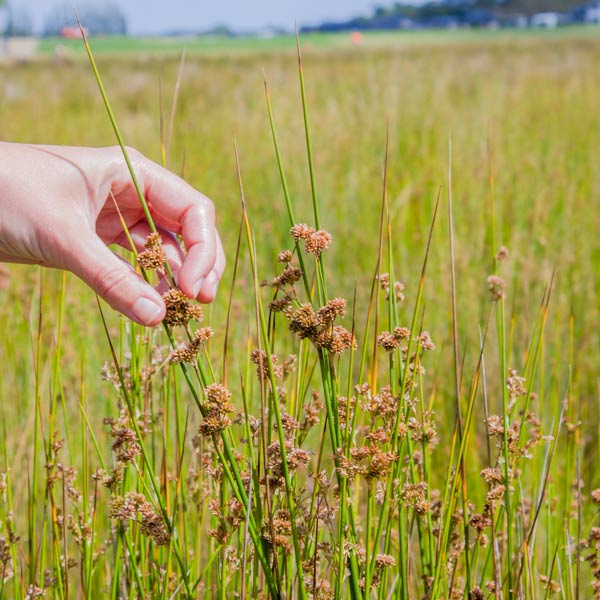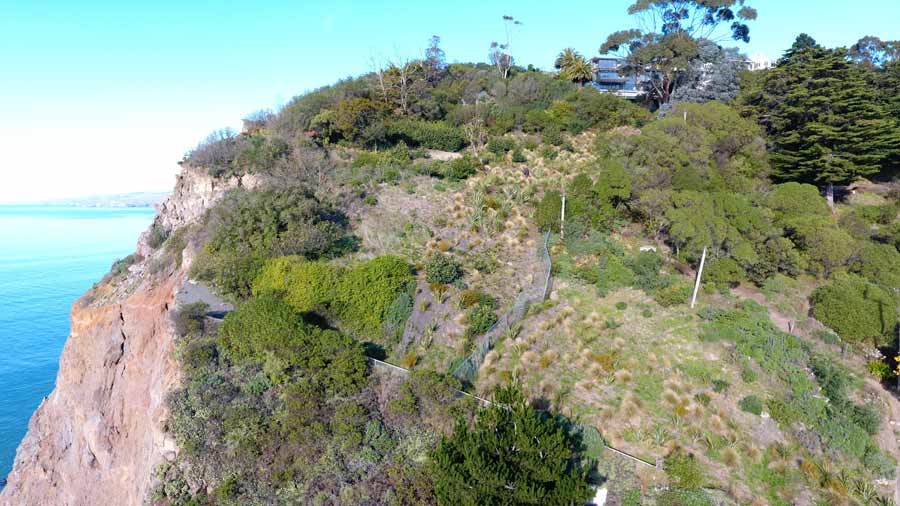Ōtakaro Red Zone Aerial Mapping and Monitoring
CASE STUDY
Ōtakaro Red Zone Aerial Mapping and Monitoring
Various suburbs, Christchurch
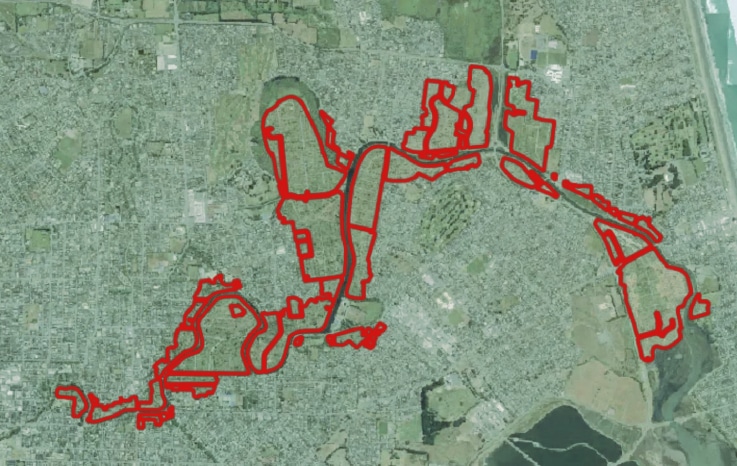
Backstory:
Post earthquake, over 8000 homes were demolished within 6.14 km2 of Christchurch and deemed residential red zone (RRZ).Being such a large piece of land in the heart of Christchurch, many stakeholders have a vested interest in making plans for the land.
CCC has a desire to integrate technology and smart information systems to help assess land use and make informed decisions.
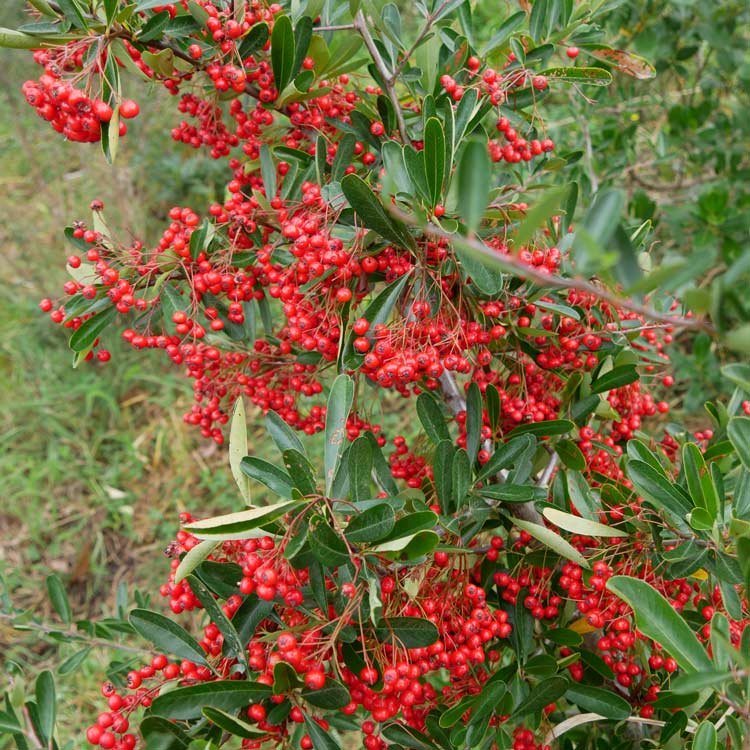
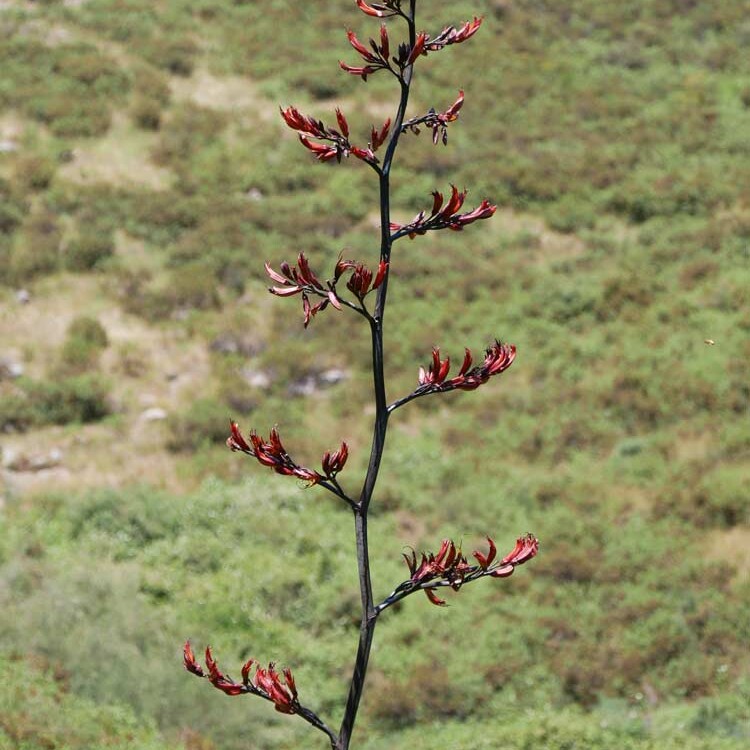
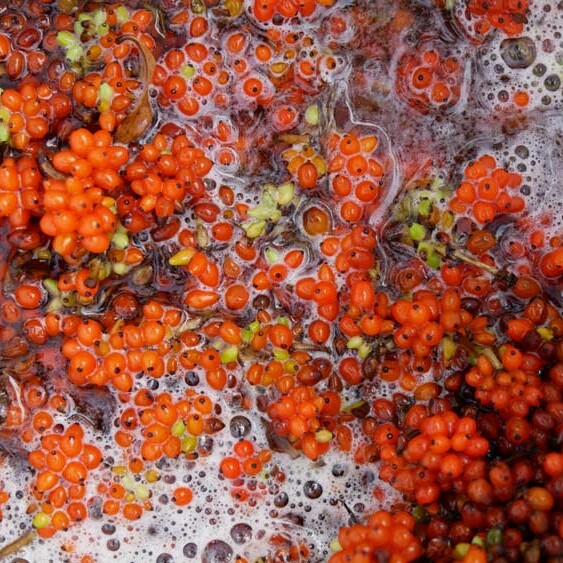
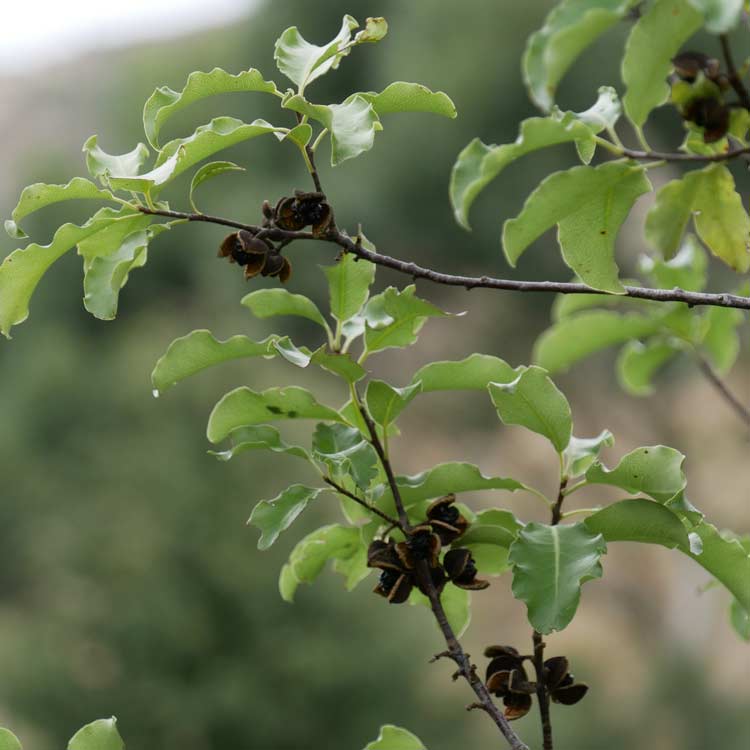

The Challenge:
What do we do with this empty land?
Between the scope and scale of the RRZ, the diversity in land use, potential for further liquefaction, and minimal topological or hydrological information available, making decisions about the future of this land became extremely challenging.
CCC had minimal information about the changes in land use, ecological growth and development, or elevation changes over time for this piece of land.
The Solution:
It was proposed to map the RRZ areas with our multispectral drone, capable of providing high tech images of the landscape; stitching the entire RRZ into one map that can be monitored over time.
Multispectral imagery is able to read chlorophyl levels in plants, see soil moisture levels, assess plant health, and give more defined data to AI.
With the inclusion of AI, we are able to recognise existing plantings, provide species differentiation, and create shapefiles for use across multiple platforms.
Data captured during this project will be used by CCC to develop an app that informs species selection for planting projects within the RRZ.
Outcomes:
High resolution orthomosaic maps including multispectral indices.
Data provided to client able to be used across multiple disciplines.
Simple way to see changes over time.
Cost effective comparatively to fixed wing.
Greater Wellington Large Scale Ecological Restoration
CASE STUDY
Greater Wellington Large Scale Ecological Restoration
Greater Wellington
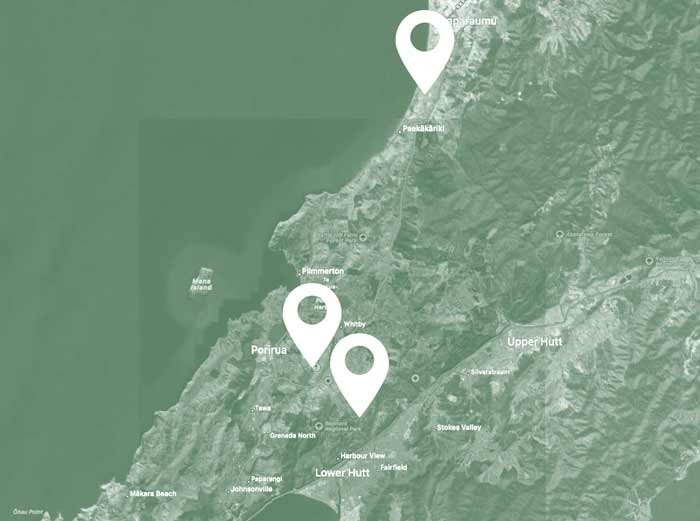
Backstory:
Greater Wellington Regional Council initiated the Recloaking Papatūānuku project in 2022 and Red Tree was engaged on the ecological restoration panel in 2023. The project spans 10 years and aims to restore approximately 1,500 hectares of retired farmland in regional parks to native forest, in line with the Council’s 2030 carbon neutral goal.
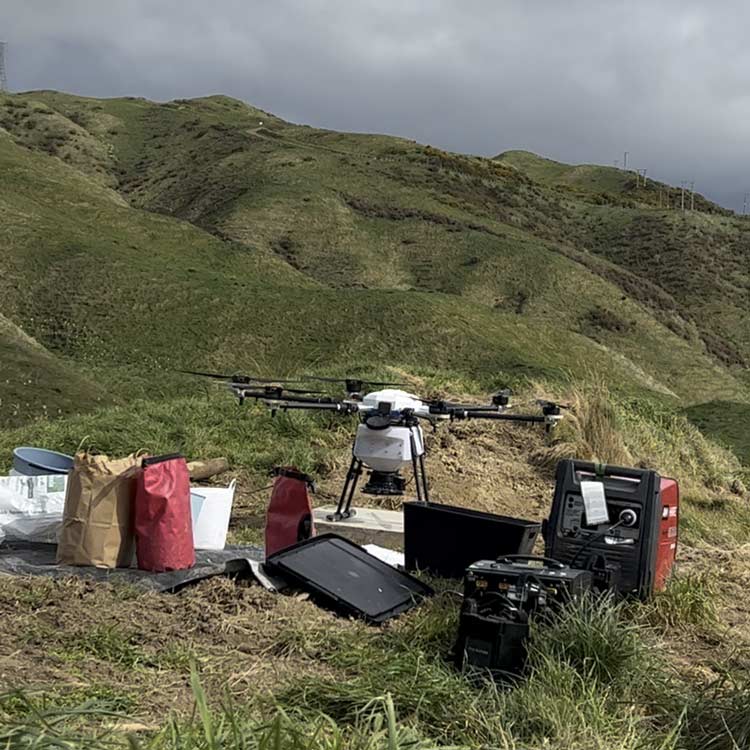
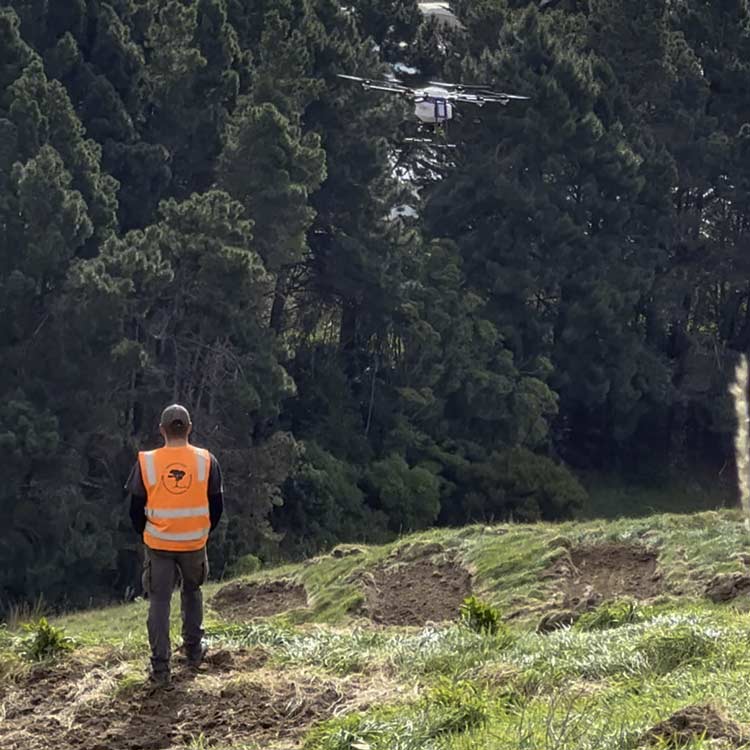
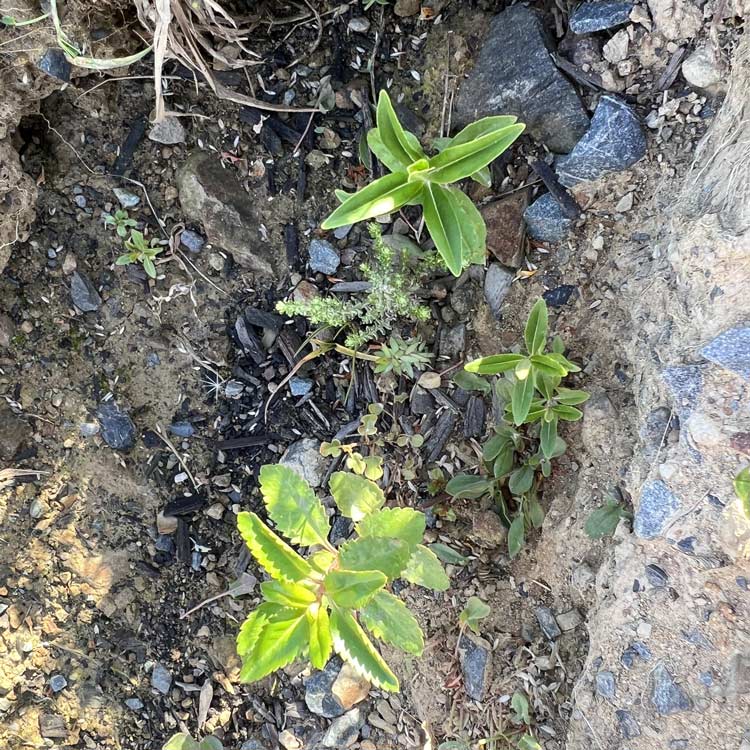
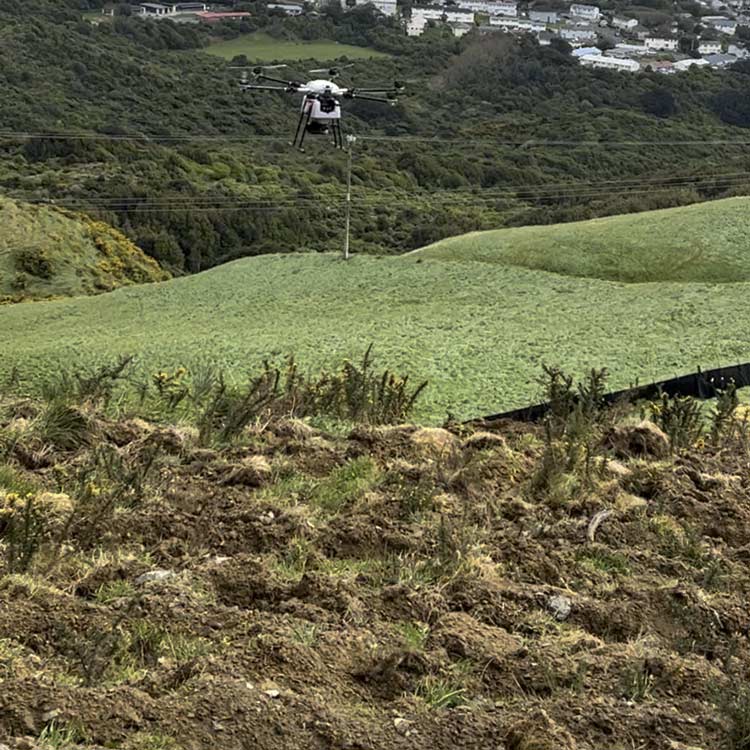
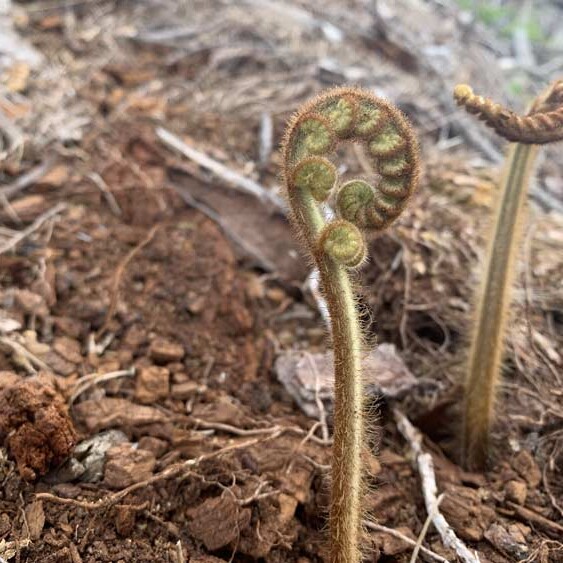
The Challenge:
Given the scope, volume of plants, and resources required to deliver this project, it seemed beyond the capability of a single contractor to deliver. Greater Wellington Regional Council set about to gauge interest from specialists within the ecological restoration industry.
The primary sites are spread across Queen Elizabeth, Belmont, and East Harbour regional parks. Some sites are exposed and, transitioning from retired pasture to natives, results in a period of high fire risk as the grass grows before native canopies are established.
The Solution:
A panel of experienced contractors was established in 2022 to deliver this visionary project.
In that same year, Red Tree conducted nine Enviroblanket® trials across the three regional parks to ascertain the viability of direct seeding in Wellington.
Eco-sourced seed was collected for direct seeding and propagation for traditional revegetation methods.
After being accepted onto the panel, Red Tree traditionally planted 120,000 natives during the winter of 2023.
The direct seeding trials were successful and resulted in Greater Wellington Regional Council scaling up and engaging Red Tree to apply 8.5 hectares of direct seeded Enviroblanket® in the winter 2023.
On one 2.5 hectare site, Waitangirua, Red Tree utilised an innovative eco-divot methodology. This is an approach developed from the Enviroblanket principles of ecological succession and biomimicry.
The method involves blending eco-sourced seed from pioneering native plants with locally sourced compost. Ground disturbance is created by earthmoving equipment and the blended seed mix is dispersed either by drone or by hand.
Following a natural period of winter stratification, seedlings have emerged en masse to colonise the disturbed ground.
Weed management and monitoring of nutrient levels are undertaken to achieve the correct balances during the maintenance phase.
Outcomes:
Germination and stocking rates in line with projections
Just under a year on, the eco-divot methodology is achieving a consistent establishment of 7-9 species of pioneer native plants and in line with projected densities of 2-4 stems per square meter
The 120,000 natives traditionally planted by Red Tree plant technicians applying best horticultural practices in 2023, have achieved a 95% survival rate to date
Red Tree established a team and operational base in Wellington
We have empowered the local community to get involved by working closely with keen volunteers from the Kapiti Coast Biodiversity Group
Greater Wellington Regional Council’s visionary Recloaking Papatūānuku project is leading the way nationally in catchment restoration. They aim to plant 750,000 plants each year for the next 10 years. Red Tree is proud to be part of this project and contribute to solving some of the supply, implementation, and maintenance challenges with innovative ecological solutions
Motorway Landscaping
CASE STUDY
Motorway Landscaping
Kerikeri Bypass, Northland
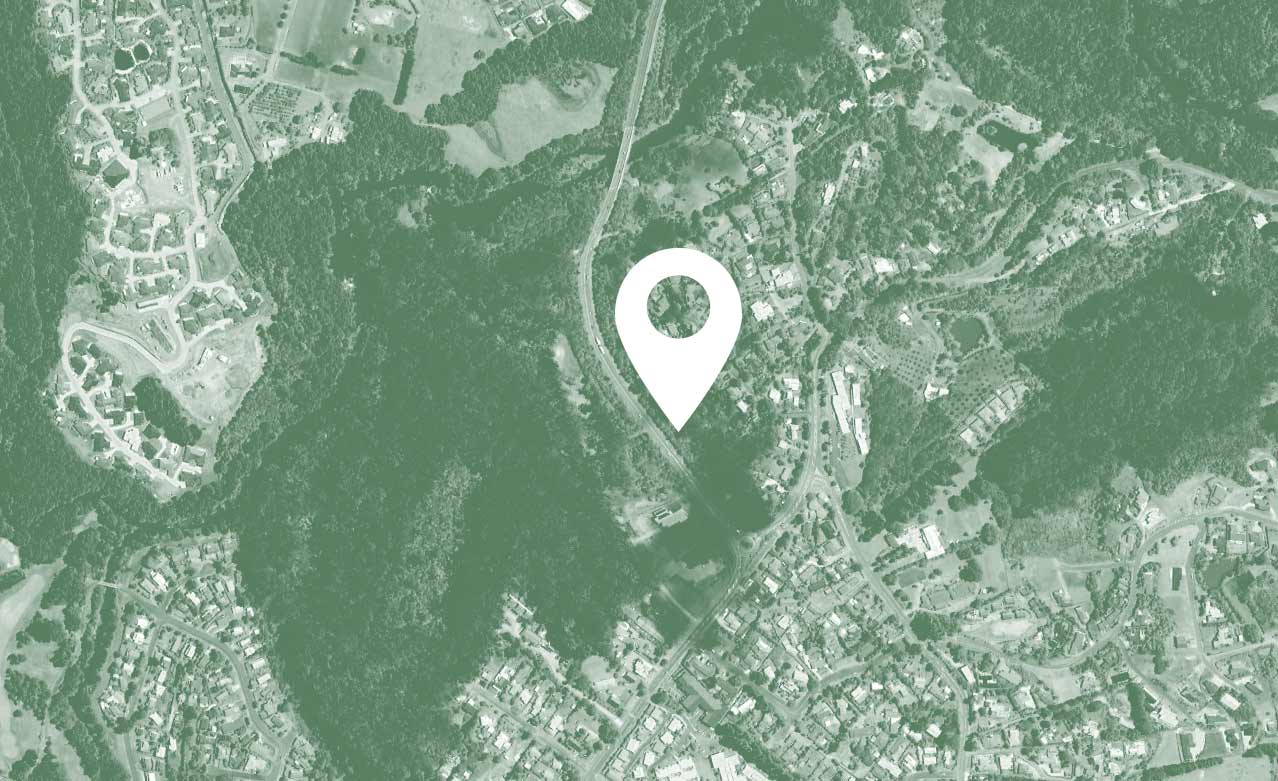
Backstory:
The Kerikeri bypass construction was a significant civic project, requiring high amenity value landscaping.
The bypass consisted of 1.5 km of motorway, an over bridge with multiple planting zones from dry forest to wetland.
This was one of Red Tree’s largest standard revegetation projects to date, with over 60,000 plants going in the ground.
This project initiated Red Tree’s taste for projects of scale and native revegetation.
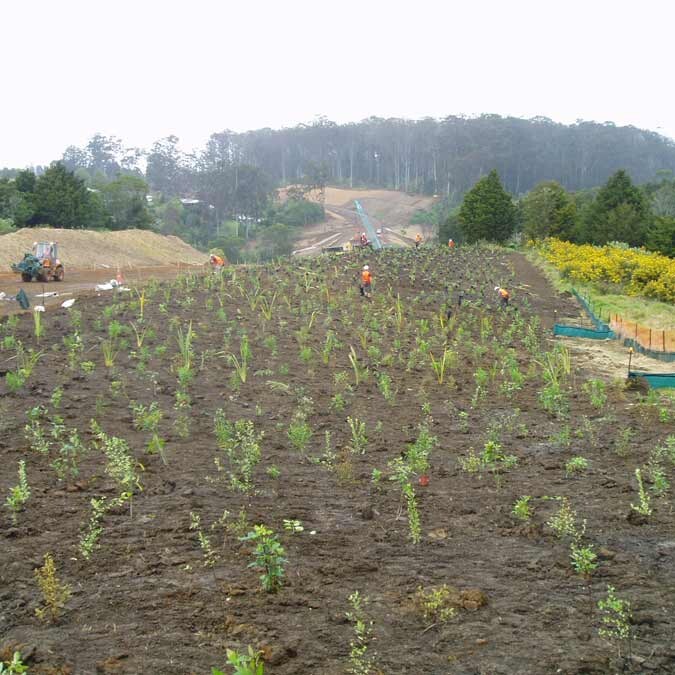
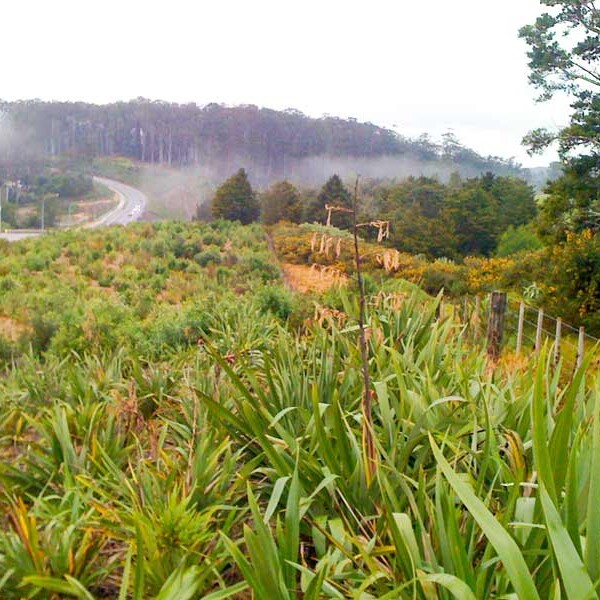
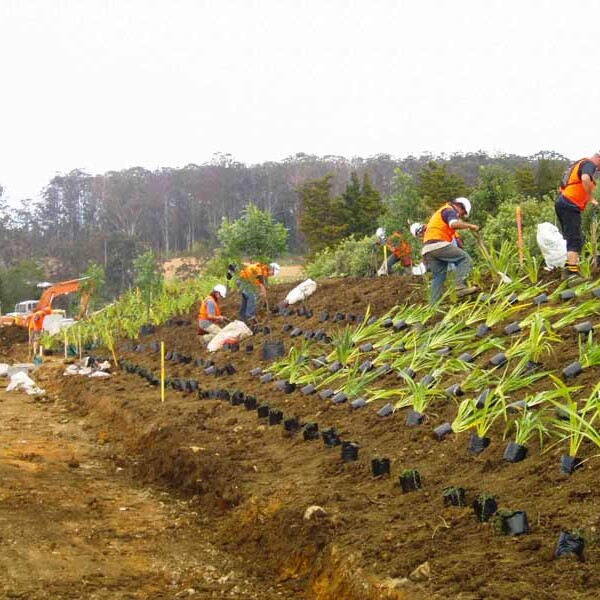
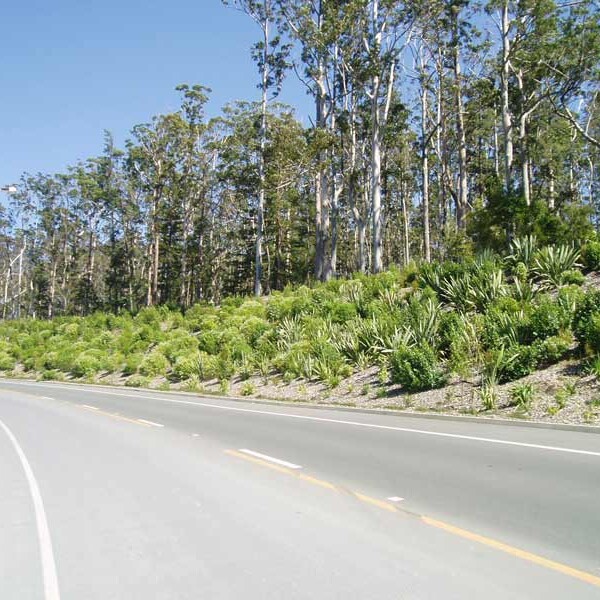
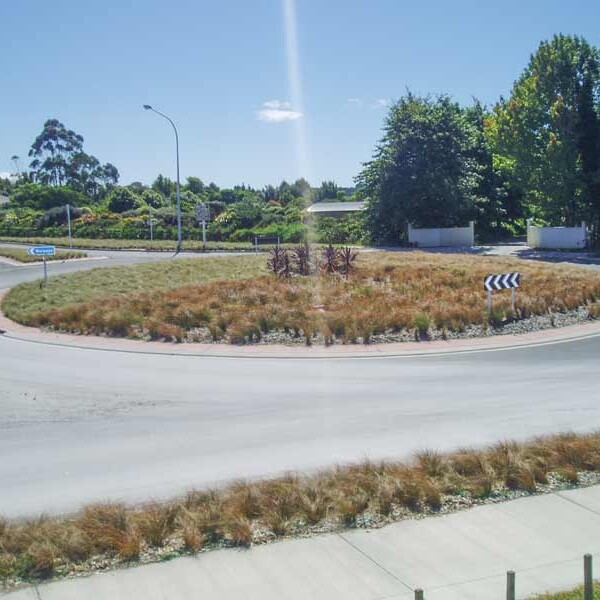
The Challenge:
This project was labor intensive therefore required a high level of staff motivation and effective project management to ensure planting quality. The challenge was to work around heavy machinery, as the motorway was being built. The lead contractor was HEB’s construction.
The Solution:
Using reliable and reputable nurseries, we ensured high quality and robust plants. With a large planting team, we were able to effectively complete the planting in the short seasonal time frames.
Outcomes:
Fantastic establishment three years on.
The vegetation is verdant and has contributed greatly to the amenity value of the bypass.
Provides prime food source for native birds.
Wetland Enviroblanket
CASE STUDY
Wetland Enviroblanket®
Cashmere Valley, Christchurch
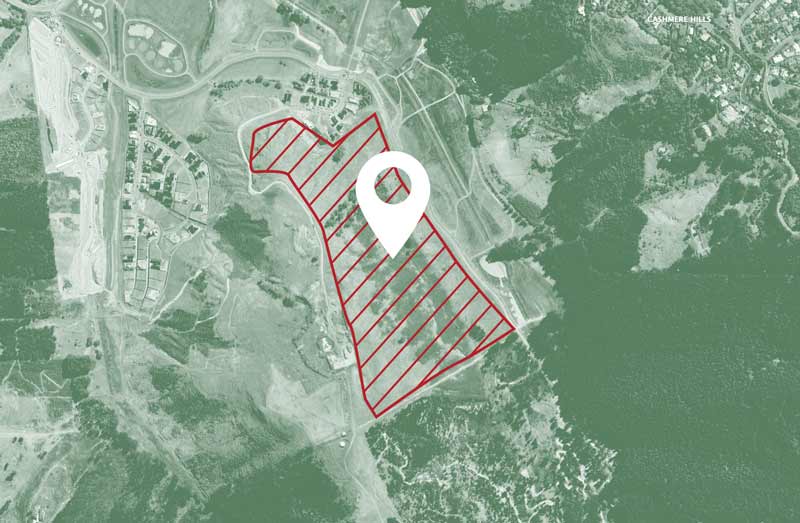
Backstory:
The 2017 Port Hills wildfires tore through tinder dried grass lands, ignited commercial forestry plantations, and devastated large swathes of established native bush. The suburb of Cashmere was on high alert as the fire jumped the road from rural areas into the upper reaches of high density urban environments. The fire burned through 2000 hectares, destroying multiple homes and leaving much of the area’s vegetation desolate, barren, and prone to erosion.
To provide backflow flood prevention and sedimentation control for the Heathcote River, Christchurch City Council Waterways and Catchment Management Team designed and implemented a stormwater detention basin downstream of the Christchurch Adventure Park. To create the basin, the area was lowered by 300 mm with a flood gate installed to manage discharge into the Heathcote. Stormwater detention allows sediment to be deposited, reduces peak flow attenuation, and allows water to be slowly released after the rain event has passed, so as not to overload the Heathcote River.
Christchurch City Council contracted Red Tree to revegetate a six hectare section of the detention basin. The newly created wetland required native vegetation to facilitate ecosystem services such as groundwater replenishment, sediment and nutrient retention, and water purification. In addition, native vegetation enhances the aesthetic and cultural value of the wetland and beautifies public walkways through the wildlife habitat.
The Wetland Enviroblanket® was applied in the Winter of 2020. New Zealand native species, particularly grasses, sedges, and reeds suited to the wetland environment were included in the seed mix. Straw mulch was then applied over the exposed areas and crimped into the ground to meet Environment Canterbury’s erosion and sediment control guidelines.
"Ecological succession is a race for domination; a process by which species best adapted to local environmental conditions succeeds."
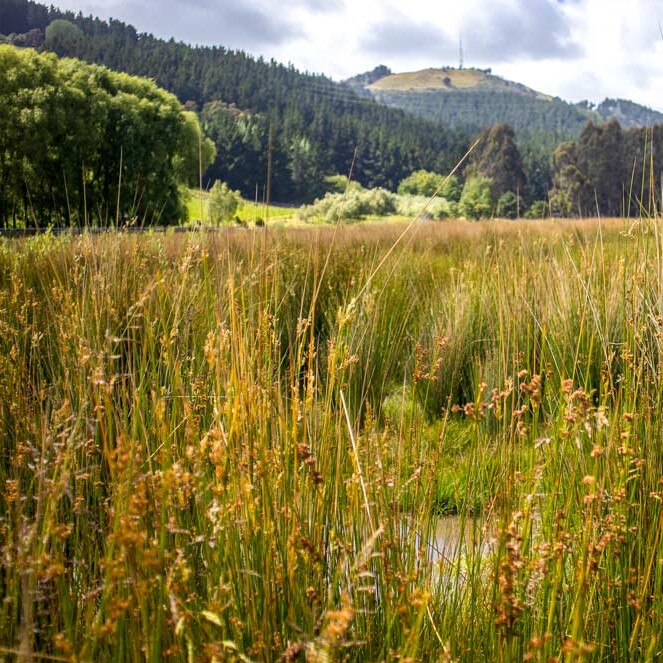
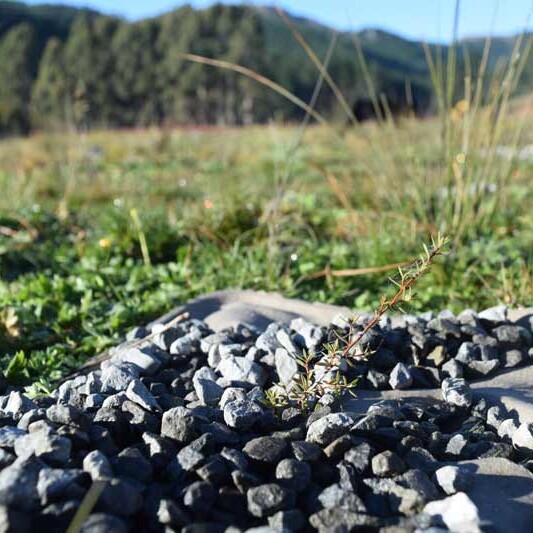
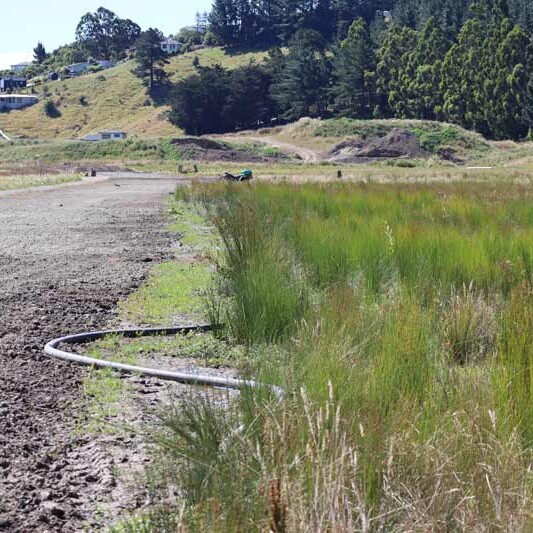
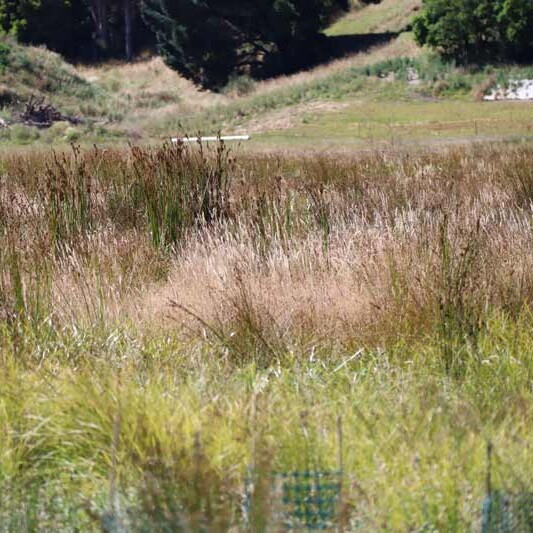
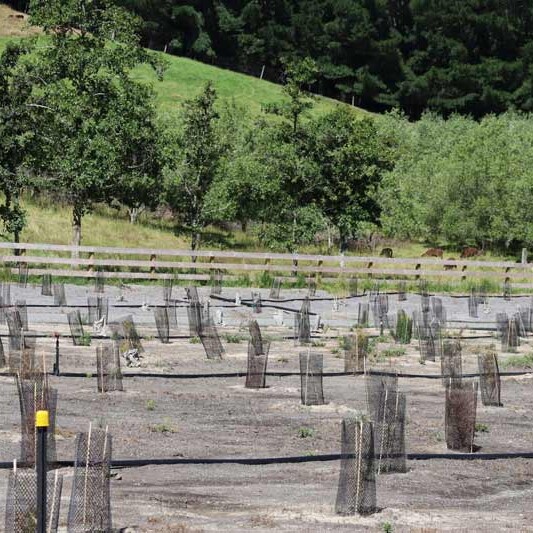
The Challenge:
Ecological succession is a race for domination; a process by which species best adapted to local environmental conditions succeeds. Exotic weeds metabolise faster than native species and without intervention, gain the upper hand; weed competition is the greatest hurdle to successful native restoration.
Four years ago, the Enviroblanket® began with small scale trials, effective on vertical faces and hard to access areas; however, as we scaled up and diversified into wetlands and riparian margins, it became clear that versatility and resource optimisation was needed to achieve a cost-effective outcome.
The Solution:
Red Tree developed innovative and unorthodox herbicide application methodologies to overcome the exotic weed competition by combining boom spraying, weed wiping and drone technologies. These breakthrough weed management practices have facilitated effective knock down of competing species and has allowed native wetland plants to emerge.
The resource optimisation process required to upscale the Enviroblanket® refined biological blends and optimised sewing timings, cultivation techniques, herbicide use, species selection and order of delivery.
Outcomes:
Consistent and healthy germination can be seen throughout the direct seeded wetland area with the emergence of broad swathes of native wetland grasses, sedges, and reeds.
Germination and stocking rates are in line with initial projections and the site is maintaining consistent hydration levels.
Intelligent drone technology precisely delivered payloads and gathered multi-spectral data from a bird’s eye view.
Significant breakthroughs on this project allowing for future collaboration, upscaling, and continued innovations for the Enviroblanket®’s design and application.
Volcanic Rim Ecological Restoration
CASE STUDY
Volcanic Rim Ecological Restoration
Sumner Road, Christchurch
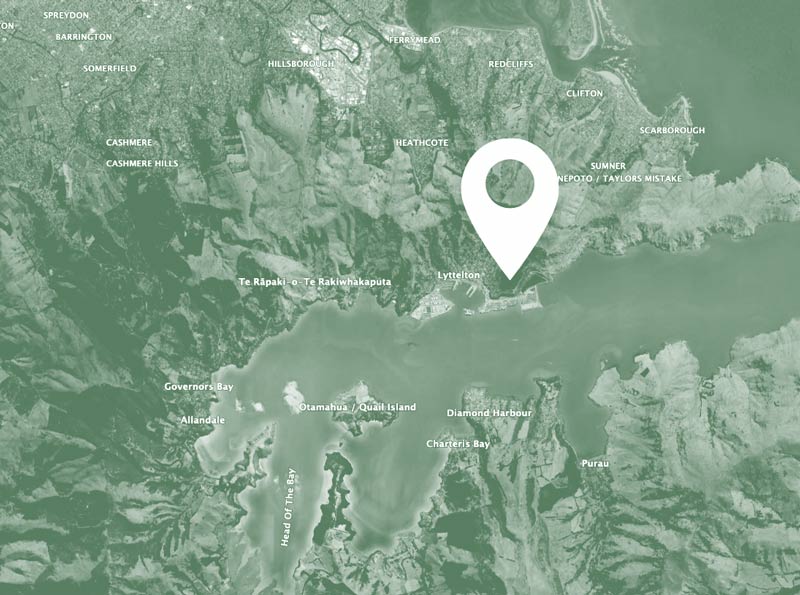
Backstory:
Following the 2011 Christchurch earthquake sequence, the road connecting Lyttelton to Sumner suffered immense destruction due to unprecedented rockfall and cliff collapse. In 2015, the Christchurch City Council (CCC) and New Zealand Transport Agency (NZTA) made the decision to reopen the road, undertaking a project of enormous scale.
In 2018, geotechnical rope access teams were required to scale the cliff face, removing loose rocks to protect the road rebuild. Unfortunately, the impact of this scaling operation destroyed a high percentage of the existing vegetation below, leaving only remnants and exposed soils. CCC commissioned a catch-bench design that would act as a first line of defence in preventing rockfall onto the new road below.
In order to rebuild the road, consent conditions required negative environmental impacts, caused by the construction project, to be offset. Red Tree, specializing in post-natural disaster ecological restoration, were approached and contracted to manage erosion, stabilize the land, and remediate the ecology above Sumner Road. Flax comprises a high percentage of the plantings in high risk rockfall zones and at maturity (as witnessed in other red zone sites), act as a second line of defence in preventing rock escape onto Sumner Road.
"Red Tree, specializing in post-natural disaster ecological restoration, were approached and contracted to manage erosion, stabilize the land, and remediate the ecology above Sumner Road."
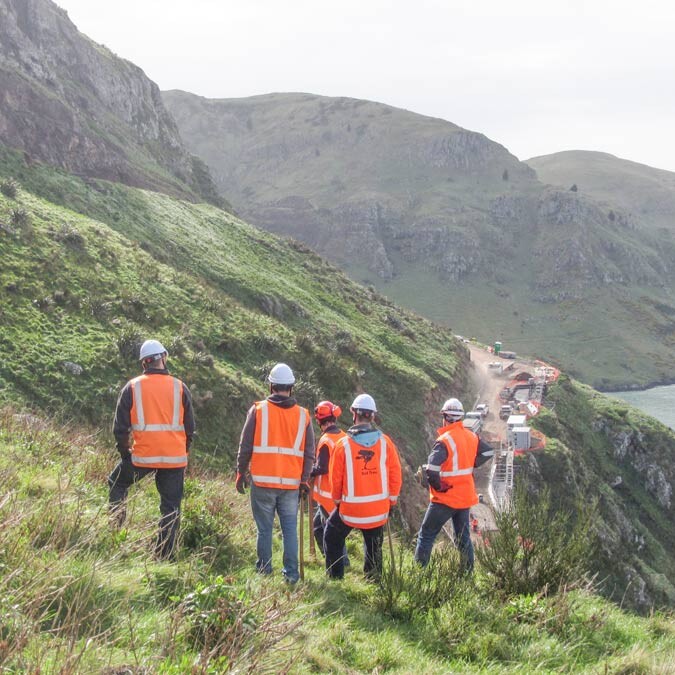
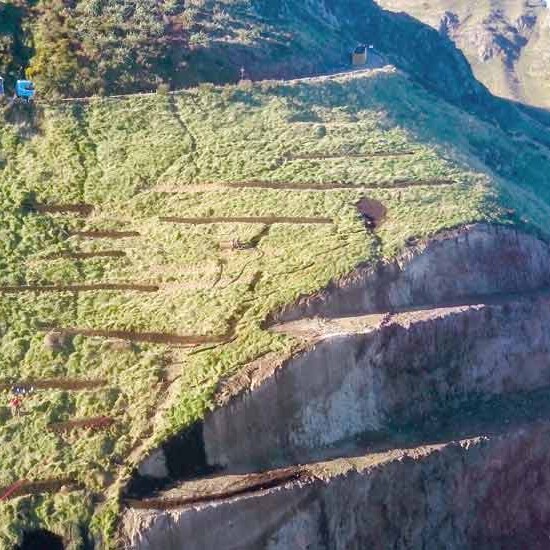
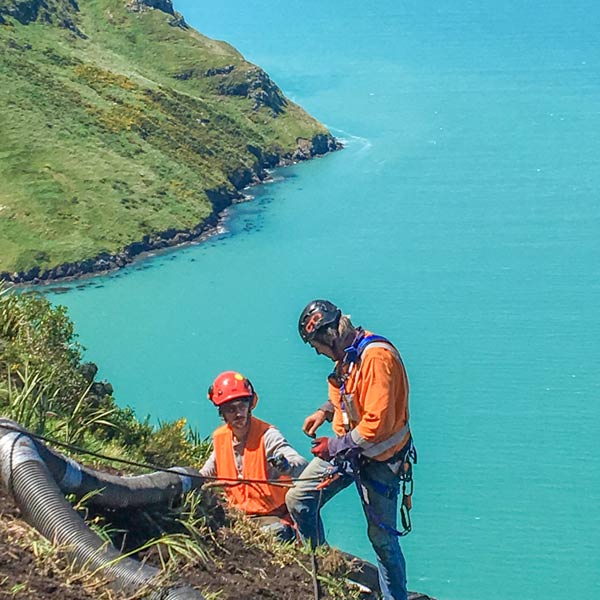
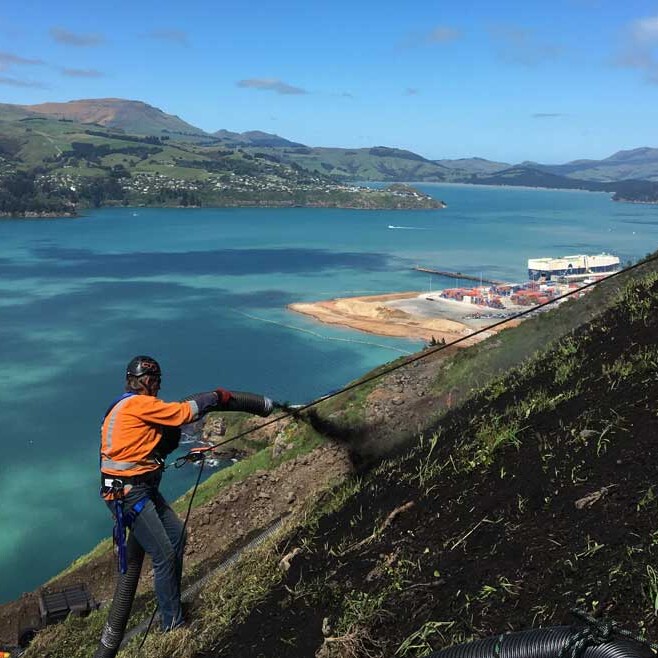
The Challenge:
The topography was the major challenge Red Tree faced in this project; the elevated gradients and unstable terrain of the volcanic rim resulted in strenuous working conditions. Vigorous health and safety protocols had to be upheld in order to mitigate the risk to the multiple contractors onsite. In addition, a high population of possums within the restoration area posed a significant risk to native establishment.
In order to deliver the traditional planting phase of the project, native plants had to be brought onsite and distributed along the hillside. The difficult access and steep terrain made this very challenging for our team. At first, Red Tree Plant Technicians carried plants manually up the slopes; however, we quickly learned that the risk of physical stress and fatigue had to be mitigated.
The Solution:
A land stabilization Enviroblanket® was applied pneumatically across the exposed area below the catch-bench for rapid establishment of exotic grass species. Compost was used to boost substrate nutrients, provide erosion control, and to filter sediment runoff. This process required anchor points to facilitate rope access across the work site and to scale vertical faces between regions.
Following on from the Enviroblanket® application, Red Tree was contracted by CCC to traditionally establish ~25,000 plants along Sumner Rd. Teams of Red Tree Plant Technicians, trained in rope access, completed the planting and worked closely with McConnell Dowell, Golder Associates, and Boffa Miskell for traffic management, rockfall risk mitigation, and biosecurity respectively.
Geovert installed a rockfall risk mitigation fence below the working areas to act as a third line of defence in preventing rocks falling onto the road below. This meant the road could remain open while Red Tree undertook ongoing planted maintenance.
Challenging access and the necessity to reduce fatigue required Red Tree to come up with an innovative method of transporting native plants up the hillside. After considering various options, it was decided that the plants would be airlifted. Way2Go Heliservices commenced the airlift, delivering the plants in one tonne customised bags and positioning them along the hillside ready for planting.
Outcomes:
The disturbed area below the cliff face, where the Enviroblanket® was applied, was transformed from a harsh rocky incline to being 100% vegetated and stable within three weeks post-application.
To date, no rocks have breached the installed rockfall prevention fence.
It is very satisfying to see the planted natives establishing well with minimal losses. Ongoing maintenance will allow for hand releasing, infill planting, and pest animal control guaranteeing the restoration project’s continuing success.
The road is now open and is one of Canterbury’s most iconic drives. The revegetation works undertaken by Red Tree not only re-established biodiversity but also added aesthetic and ecological value to the area; the surrounding landscape is now green and aesthetically beautiful.
Post-Earthquake Native Revegetation
CASE STUDY
Post-Earthquake Native Revegetation
Port Hills Red Zone, Christchurch
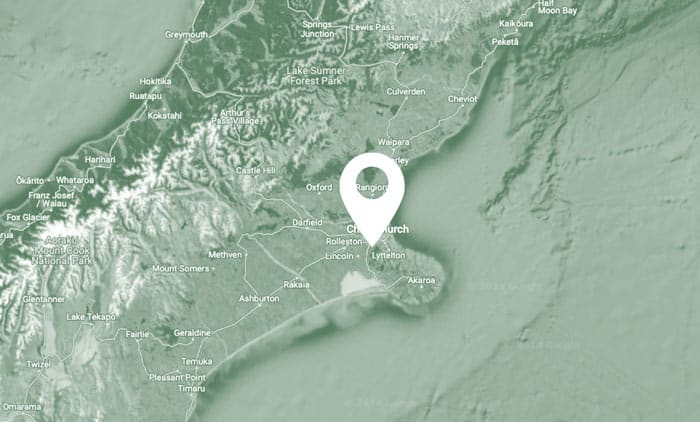
Backstory:
As a result of the sequence of Christchurch earthquakes between 2010 and 2011, many houses across the Port Hills were red zoned as the land became unsuitable for residential habitation. Land owners settled with the Crown, houses were demolished and the bare sections were recontoured. To restore the landscape, it was decided that the vacant sections would be revegetated with New Zealand native species.
In June 2017, Red Tree was accepted onto Land Information New Zealand (LINZ) panel as a preferred contractor for Port Hills Red Zone Indigenous Planting and Maintenance.
"Nature abhors a vacuum and in ecological terms that translates to, “ bare earth will not be tolerated”. In short order, Mother Nature covers exposed earth, as without protecting vegetation the earth surface is highly susceptible to wind and water erosion."
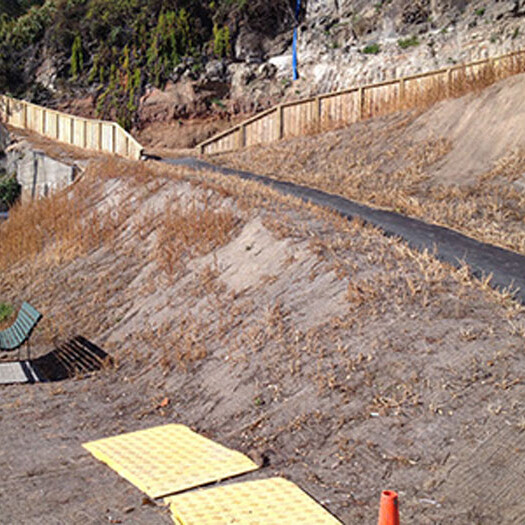
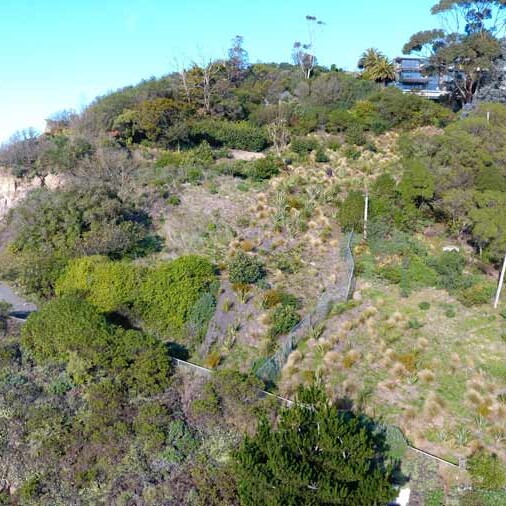
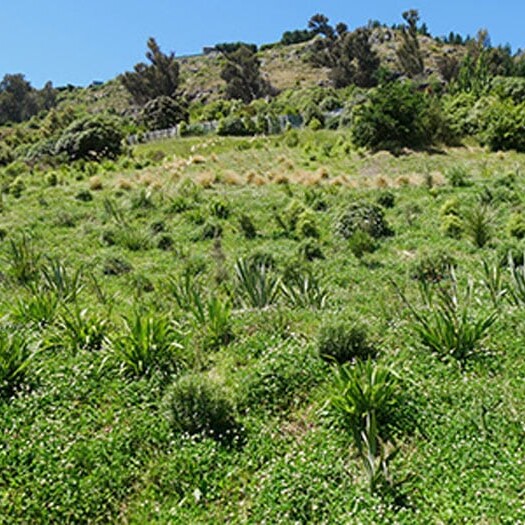
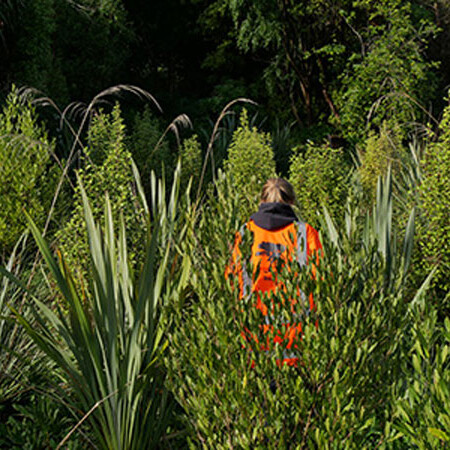
The Challenge:
Scope of work for the post-quake landscape remediation involved the maintenance and management of 7.6 hectares of planted Port Hills Red Zone sites, in the rim locations of Governors Bay, Lyttelton and the hill suburbs through from Sumner to Cashmere.
The challenge for Red Tree was to establish native plantings and binding ground covers on tough clay substrates, gradients and North-facing aspects to revegetate and stabilise the land.
Establishing native plants were forced to compete with invasive weed infestations of Fat Hen, Californian Thistle and Mallow, utilising organic weed control in high density residential zoning.
The Solution:
Nature abhors a vacuum and in ecological terms that translates to, “ bare earth will not be tolerated”. In short order, Mother Nature covers exposed earth, as without protecting vegetation the earth surface is highly susceptible to wind and water erosion. Downstream sedimentation is the consequence!
Red Tree utilized a clover plant companion technique; attractive to insects and bees, this versatile legume, with its distinctive flowers and cheerful foliage, belies a mass of rubbery roots that work to fix nitrogen into the soil as it creates a tenacious mat to bind the earth.
Clover species are numerous and by introducing the variety of clover containing the most appropriate attributes to the disturbed urban hillside sites, we were effectively able to suppress the existing bank of less helpful weeds and in conjunction with jute matting, quickly stabilize the cut faces.
In Nature nothing is wasted, everything is recycled. Red Tree Plant Technicians then hand release the natives, cutting out weeds around the stems and using the recycled biomass as a mulch around the plants. Topping using bush cutters was employed to prevent seed dispersal. On tough sites, it is essential that valuable biomass is recycled and able to enhance soil structure.
Through observing challenging site conditions and mainstream methodologies, Red Tree began conducting research in direct-seeding natives and compost-based revegetation technologies. With the intent to improve outcomes in harsh environments, the Enviroblanket® development was underway.
In support of the new technology’s potential, LINZ awarded an entire Red Zone site for Red Tree to trial the Enviroblanket®. Applied alongside traditional planting for comparison, the direct-seeding technology proved to be extremely successful.
Outcomes:
Three years on, there have been approximately 47,650 New Zealand native plants established and maintained across the LINZ Port Hills Red Zone.
Red Tree’s horticultural techniques, alongside regular maintenance, watering and infill planting have resulted in successful native plant establishment and 95% ground cover across the Port Hills Red Zone.
Native vegetation is now establishing well, creating stability, reducing sediment runoff and preventing erosion, the sites are also aesthetically beautiful and add great ecological value to the surrounding communities.
In addition, Red Tree has discovered many heirloom fruit tree varieties which once grew in people’s backyards in the Port Hills Red Zone. To preserve and perpetuate them, our plant technicians have taken cuttings and grafted them onto existing trees in the orchard at our Horotane Valley base.
Post-Earthquake Coastline Restoration
CASE STUDY
Post-Earthquake Coastline Restoration
Kaikōura Coastline
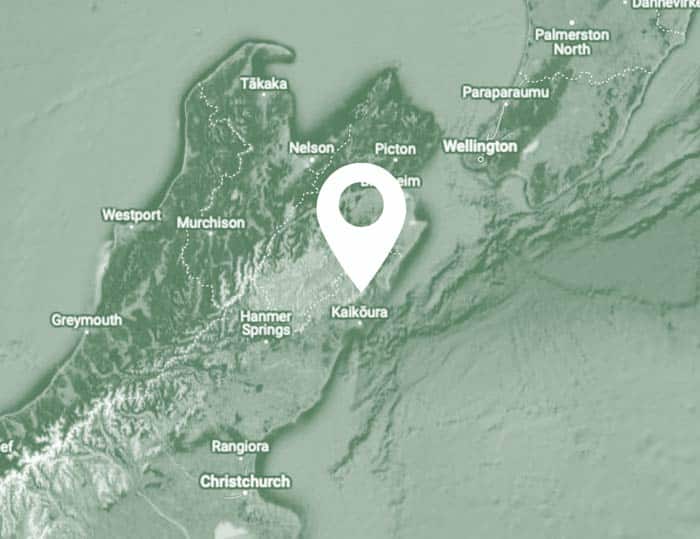
Backstory:
On Monday the 14th of November 2016, a magnitude 7.8 earthquake shook the Kaikōura coastline. Mass land subsidence occurred along the Hikurangi subduction zone causing between 80,000 and 100,000 landslides with close to one million cubic metres of slip material collapsing onto the transport corridor below.
Disturbance caused by these landslides wiped out large areas of vegetation, leaving slip faces barren and exposed to erosion.
This disaster interrupted the economy of the South Island and isolated local communities. Since 2016, thousands of people and over one billion dollars have been invested to remediate the effects of this natural disaster.
"...devoid of vegetation, topsoil, and nutrients, presenting a challenge to re-establish flora onto these degraded clay and mineral substrates."
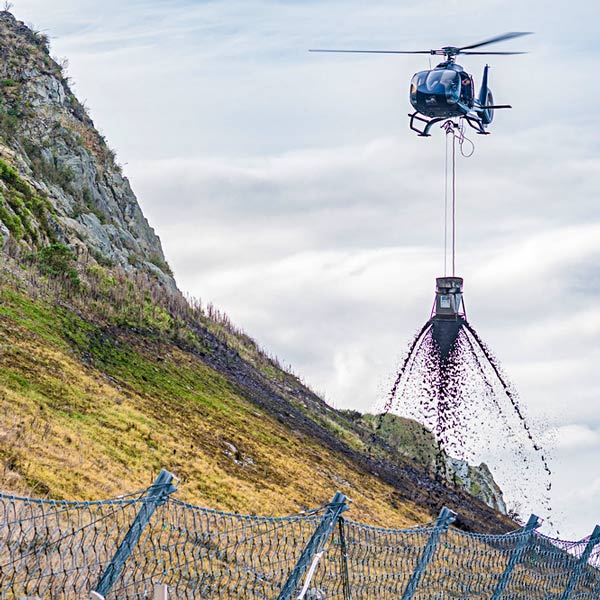
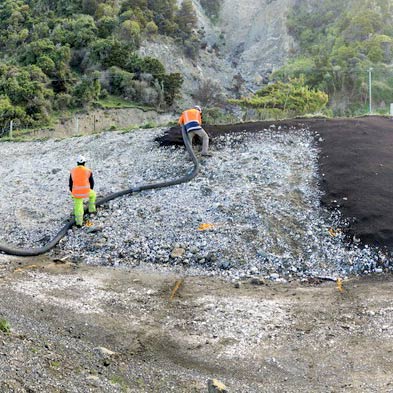
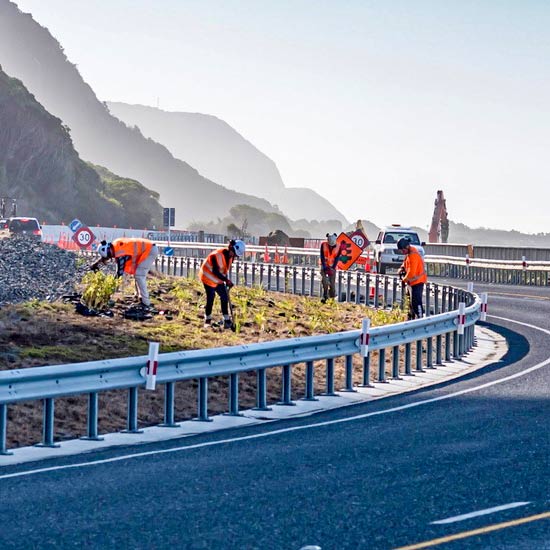
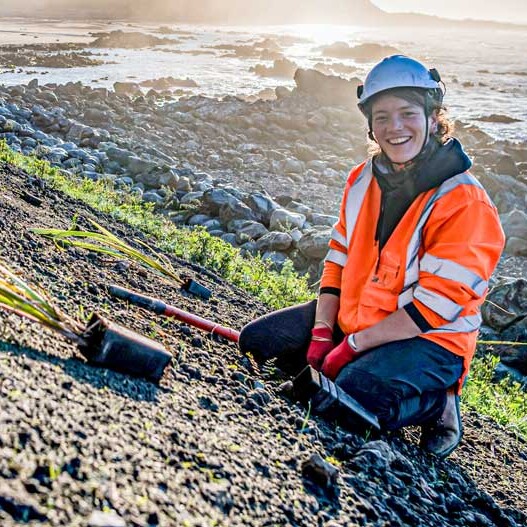
The Challenge:
NCTIR (North Canterbury Transport Infrastructure Recovery) was an alliance established to tackle the recovery efforts of both the road and surrounding areas.
An army of people, trucks, and diggers created multiple permanent stockpiles and engineered batters using the slip material removed from significant slips within the transport corridor. These stockpiles and batters were devoid of vegetation, topsoil, and nutrients, presenting a challenge to re-establish flora onto these degraded clay and mineral substrates.
Eco-sourcing plants to add aesthetic value to the newly established safe stopping areas and to stabilise engineered stockpiles and batters was a challenge due to the short timeframes and large volumes required.
The Solution:
Red Tree specializes in using eco-sourced native seed in post-natural disaster ecological restoration projects and was engaged to undertake a combination of traditional planting and Enviroblanket® applications along the damaged coastline.
A prescriptive coastal Enviroblanket® was designed to withstand the harsh environmental conditions presented in Kaikōura and to facilitate remediation of degraded substrates.
In 2018, Red Tree, in collaboration with other local nurseries, collected eco-sourced native tree and shrub seed within the Kaikōura ecological district. Invasive pest plant management was then undertaken in 2019 to prepare sites for planting and direct seeding.
In 2020, Red Tree traditionally planted more than 55,000 native plants and pneumatically installed approximately 4 hectares of Enviroblanket® across multiple sites within the corridor. In order to remediate a particular inaccessible slip site, Red Tree also developed and applied an aerial Enviroblanket® via helicopter.
Outcomes:
In areas with higher quality substrates, the Enviroblanket® has performed exceptionally well, exhibiting a broad range of species diversity and rapid establishment. These areas require minimal assistance to continue establishing.
Other areas with more difficult constraints have required nutrient support to assist growth and non-palatable species selection to mitigate animal browsing.
Safe stopping areas designed by NCTIR and traditionally planted by Red Tree have a significant aesthetic value as well as hold space for the local community and visitors to stop safely and view the magnificent landscape. These high profile areas work to integrate the roadway into the natural environment and greatly enhance the ecological value of the coastline.
Red Tree’s involvement in the recovery efforts has begun to restore the diverse ecology of the Kaikōura coastline, creating a habitat for local wildlife and enhancing the wellbeing of the land; holding value for future generations to enjoy.
Dry Forest Enviroblanket
CASE STUDY
Dry Forest Enviroblanket® Stormwater Detention Basin
Curletts Road, Christchurch
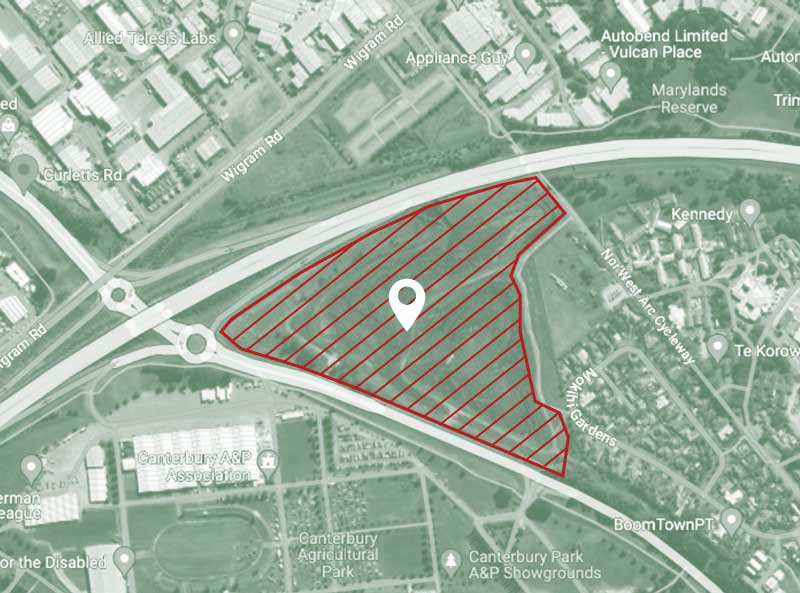
Backstory:
Land erosion, sedimentation, and poor drainage, resulting from the impacts of the 2011 Christchurch earthquake sequence produced flooding and damage to properties adjacent to the Heathcote River.
To mitigate this inundation, the Christchurch City Council Waterways and Catchment Management Team commissioned the Curletts Road Stormwater Detention Basin to provide upstream flood prevention and peak flow attenuation.
Prior to creating the detention basin, the area was pasture with the Curletts Stream running through it. In order to detain and filter water, a sizeable ~8 hectare excavation needed to be formed and landscaped accordingly.
"The first commercial large scale Enviroblanket®, – effectively an on-site nursery; could it be done?"
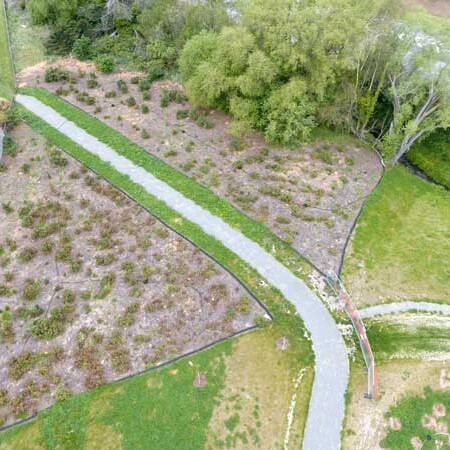
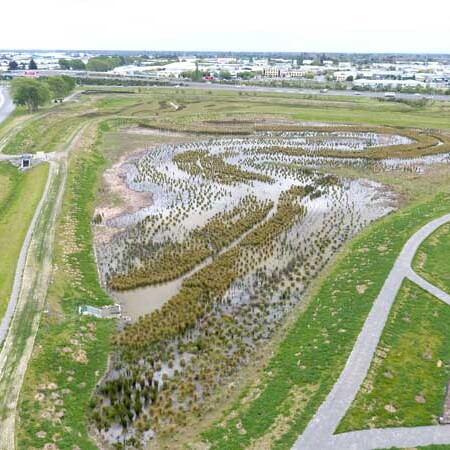
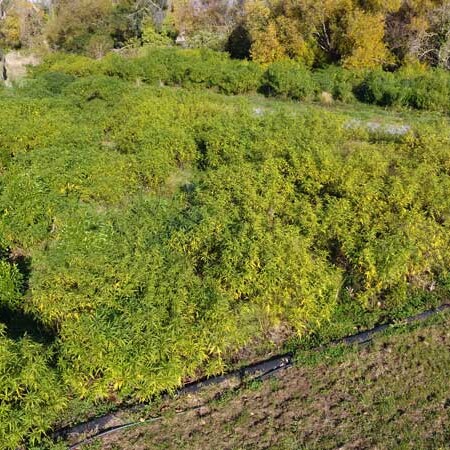
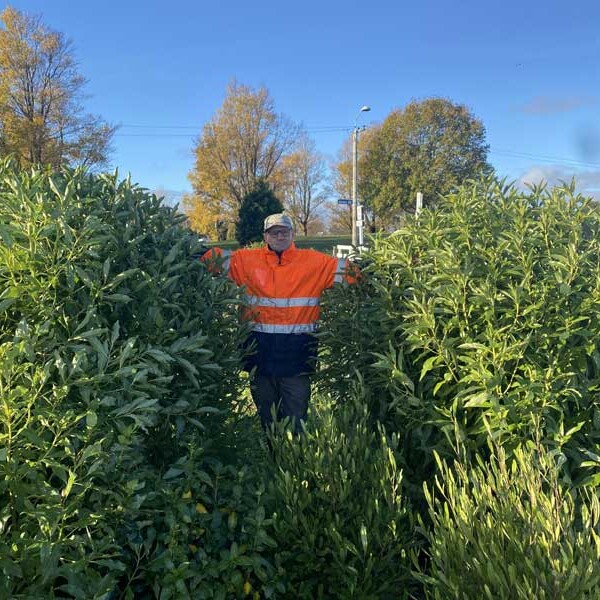
The Challenge:
The first commercial large scale Enviroblanket®, effectively an on-site nursery; could it be done?
Native direct seeded Enviroblanket® technology, developed by Red Tree Environmental Solutions (Red Tree), is essentially disruptive in that it bypasses the nursery system, interacting directly with disturbed substrates in a responsive time frame. Letting nature lead and assisting with biomimicry and self-design principles, Red Tree aims to replicate the life-giving function of the forest floor.
An undisturbed soil profile provides established networks of root systems, microorganisms, and mycorrhizal creating nutrient pathways, aeration, and drainage. Once the natural soil structure is disturbed and modified, there is a significant loss of soil ecology. This disturbance and compaction of engineered soils produced a major challenge to seed germination and healthy plant growth on this site.
Exposed to the elements, this large and open area is continually subjected to environmental extremes such as high wind velocity, sun exposure in the summer, and sinking cold during the winter with the attrition of browsing pest animals such as rabbits and hares.
The Solution:
Adjacent to a traditionally planted area, a one hectare dry forest Enviroblanket® was applied in August 2019 around the perimeter of the wetland basin. Nature provides direct feedback as to which species are best suited to variance within specific microclimates; species best suited to environmental conditions display higher germination rates with success being reflected in strong growth and plant resilience. Biomimicry and self-design capacity that the Enviroblanket® provides, gives nature the best opportunity to select species best suited to adapt and thrive in local environments.
During site preparation, mechanical ripping was undertaken to address compaction, improve poor soil structure and drainage. Biological additives were applied to the Enviroblanket® post-application to assist biogeochemistry health. Microorganisms and fungal networks rebuild microbial activity in the soil which in turn creates a symbiotic relationship between plant communities, builds resilience, and improves growth.
As this site is widely exposed to the elements, Red Tree utilised a fast-growing native nurse crop to provide protection and cover during the first year of establishment for the slower growing natives to emerge through.
Mitigation of pest browsing effects was undertaken in conjunction with Excell Biosecurity, implementing pest reduction controls and perimeter fencing in the most challenged areas.
Outcomes:
Initial germination: September and October of 2019.
November 2020: Plant establishment range in height from 5cm to 50cm and secondary germination observed among wind dispersed pioneer species.
Late 2021: Plants range in height from 30cm to 1.8m; a stark contrast to traditionally planted natives exhibiting signs of dehydration and transplant shock.
Canopy cover in standard revegetation, growing in optimal conditions at 1.5 m spacings, will take approximately three years.
The Enviroblanket® has demonstrated at Curletts Road that this outcome can be achieved within 20 months post-installation, facilitating rapid growth and establishment.
Directly applying eco-sourced native seeds into an environment conducive to their success ignites healthy competition and builds resilience.
Plants naturally grow more successfully and with greater resistance to pests and diseases in supportive and biodiverse communities.
The observed increased density brought about by direct seeding supports plants to outcompete weeds therefore reducing inputs and maintenance costs.
Cut Slope Land Stabilisation
CASE STUDY
Cut Slope Land Stabilisation, Lyttelton Port Company
Lyttelton, Christchurch
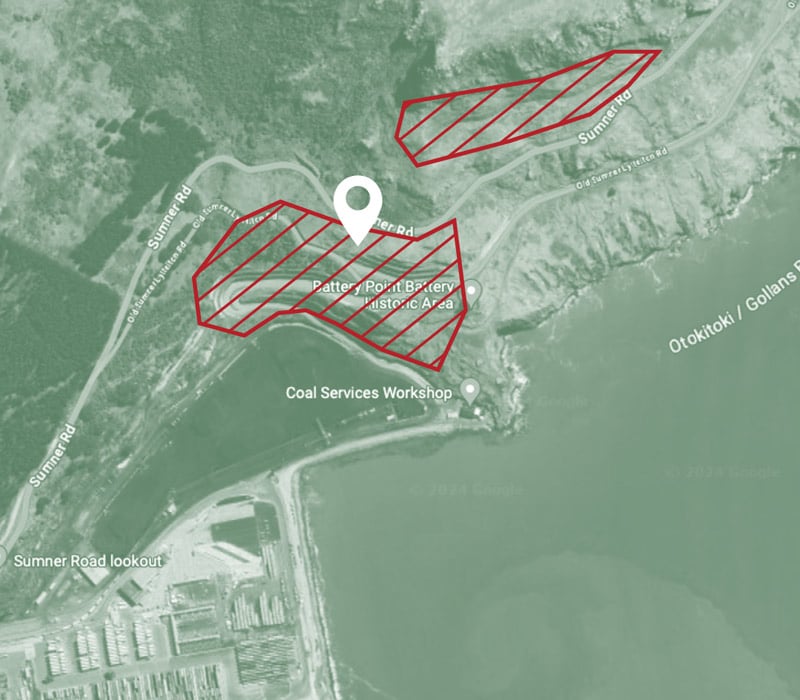
Backstory:
As part of the 10 hectare land reclamation occurring at the Lyttelton Port Company (LPC), the haul road to their existing quarry was to be upgraded to improve access for heavy vehicles.
Vertical cuts had to be made into the steep cliff to lower the gradients of the haul road. Excavation of the cuts revealed pockets of erodible loess clay among the rock. Red Tree was contacted by Fulton Hogan, the civil contractor undertaking the excavations, to remediate the potential for further erosion.
"Being directly above the port operations and below the new road construction, this site was extremely high profile."


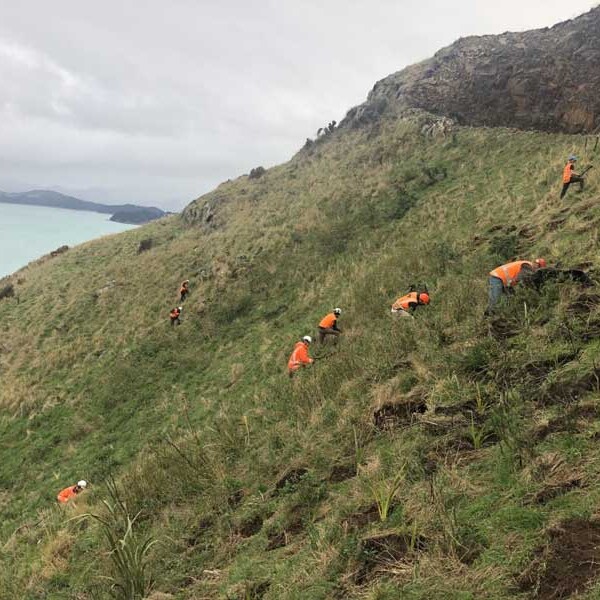

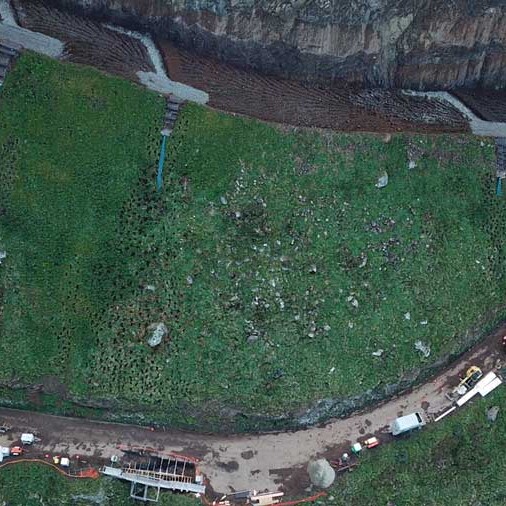
The Challenge:
Loess is comprised of platelets which carry a negative charge facilitating ion exchange once saturated and is therefore extremely partial to erosion. During precipitation onto the Sumner Road catchment, high velocity sheet flow was running down slopes above the vertical cuts and eroding the loess faces.
Sumner Road above LPC was still under construction after being closed following the Christchurch earthquake sequence. Being directly above the port operations and below the new road construction, this site was extremely high profile.
Coordination and communication between these two large civil construction projects was a challenge that required high levels of compliance and health and safety. Once windows of ingress were coordinated, gaining access to the steep slopes above the vertical cuts was also a challenge. Rope access teams were required to move across the slopes and work on the eroding cut faces.
The Solution:
A series of Enviroberm®’s and an Enviroblanket®, delivered via Canterbury Woodchip’s industrial high tech pneumatic applicator, was considered as an effective solution for the vertical cut faces and steep gradients above.
Trapezoidal Enviroberm®’s with dimensions 300mm high and 600mm wide were installed perpendicular to the gradient on the steep slopes above the eroding loess cut face. Enviroberm®’s bisected the slopes; constructed at intervals to interrupt sheet flow and facilitate infiltration. Rilling etched into the landscape from previous water flow indicated how best to work with the hydrology of the slope.
To remediate continued loess erosion, Red Tree Rope Access Teams securely pinned a dense three-dimensional reinforcement mat onto a portion of the vertical cut and managed the pneumatically applied Enviroblanket® onto the interface. Specific species of clover and drought tolerant grasses were selected and seeded over the Enviroblanket® to stabilise and vegetate the cut face.
Outcomes:
The Enviroberm® successfully acted as a slope interruption device, slowing the velocity of sheet flow and facilitating infiltration.
The loess cut is no longer eroding from the slopes above and the vertical face is heavily vegetated from the Enviroblanket® installation.
A high level of safety compliance was achieved with seamless communication occurring between the multiple contractors on site, allowing the completion of the project on time and to budget.
Legacy Planting - Tai Tapu Heritage Project
CASE STUDY
Legacy Planting - Tai Tapu Heritage Project
Tai Tapu, Christchurch
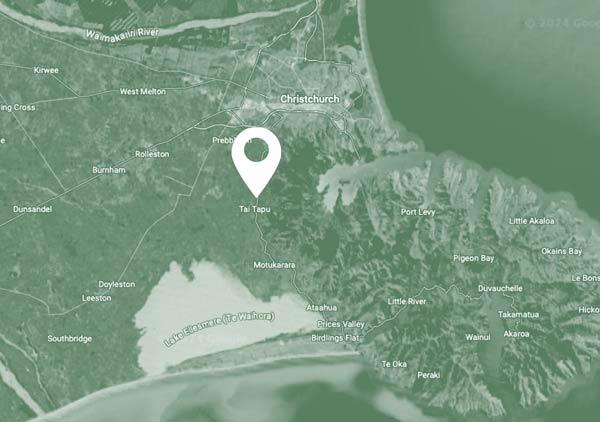
Backstory:
With a vision to the future, public and private visions can become intertwined in the repurposing of landscapes. In this case, our clients engaged in a heritage subdivision project, situated in rolling country below a public reserve, with high aesthetic requirements.
As a natural watershed, beneficial collaboration with the Christchurch City Council was part of the landscaping process. A series of water channels and holding basins were created to safeguard against downstream inundation and sedimentation. In 2019, Red Tree were called upon to design and plant the riparian margins.
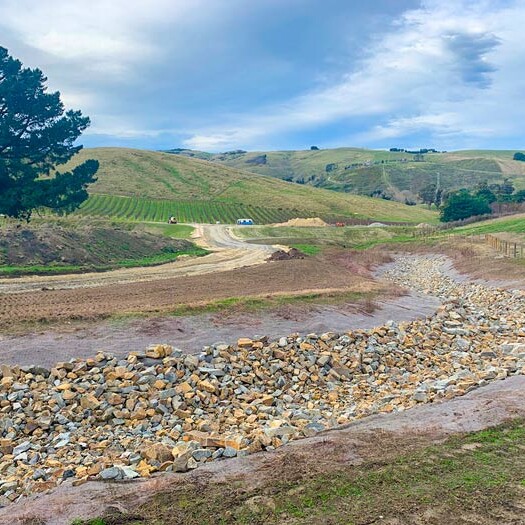
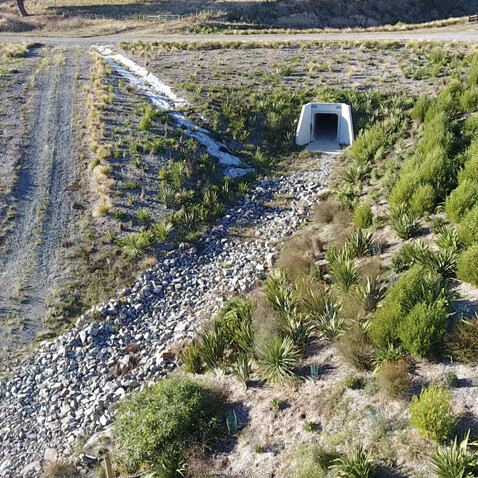
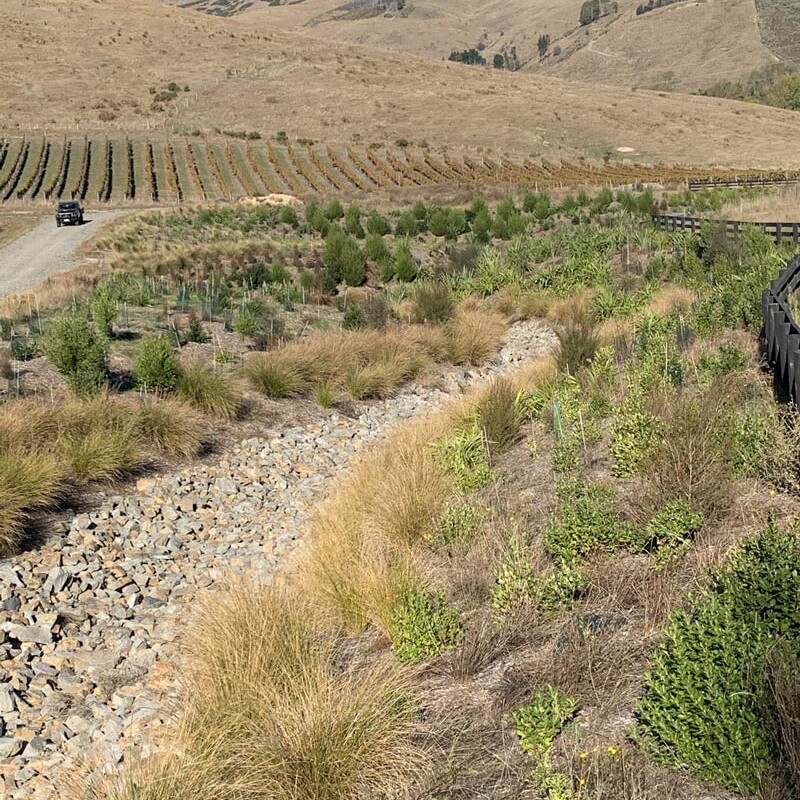
The Challenge:
The landscape design and planting required functionality and high amenity value.
As the project backs onto native bush, this site is a hotspot for goats, deer, rabbits, and hares. The pests meandering down the valley and browsing the plantings has been a significant challenge in this project, with some of the bigger tree species becoming victimised by young stags shedding their velvet.
The Solution:
Moved by the sculptural ribbon like topography, Red Tree’s in-house Landscape Designer allowed the plantings to accentuate the contour of the land and water course, creating corridors of visual passage across the plantings. Kowhai, ribbonwoods, lancewoods, mountain flax, pittosporum, carex virgata, and silver tussocks were all part of the plant palette.
In consultation during the conceptual design phase, Red Tree’s horticultural team anticipated the presence of pest plants and recommended ideal plant spacing and full mulch coverage at ~75 mm depth. For ease of mind, our clients engaged with our three year maintenance and monitoring package, which allows Red Tree to guarantee 95% establishment success and protection of their investment.
Plant losses due to pest browsing were detected early in the maintenance phase. Pest management was then undertaken and the unharmed plants were caged, with replacement plants being installed the following planting season.


